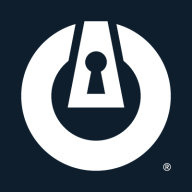

Symantec Zero Trust Network Access and ThreatLocker Zero Trust Endpoint Protection Platform are products competing in the network security category through zero-trust principles. Data comparisons indicate that while Symantec provides comprehensive network access solutions, ThreatLocker holds an advantage with its endpoint-specific features and protection.
Features: Symantec Zero Trust Network Access emphasizes secure network access through identity verification, adaptive policies, and granular access controls. ThreatLocker focuses on endpoint-specific protection with default-deny policies, application whitelisting, and ringfencing.
Ease of Deployment and Customer Service: Symantec's setup benefits from extensive documentation and integration capabilities, ensuring a streamlined process. ThreatLocker offers straightforward deployment and dedicated customer service appealing to organizations favoring hands-on security management.
Pricing and ROI: Symantec Zero Trust Network Access typically includes higher initial costs due to its extensive features and network-wide coverage, offering significant returns from its broad security. ThreatLocker presents a cost-effective endpoint-specific solution, ensuring a quicker ROI with its focused approach and lower setup expenses.
| Product | Market Share (%) |
|---|---|
| ThreatLocker Zero Trust Endpoint Protection Platform | 2.3% |
| Symantec Zero Trust Network Access (ZTNA) | 1.1% |
| Other | 96.6% |

| Company Size | Count |
|---|---|
| Small Business | 32 |
| Midsize Enterprise | 4 |
| Large Enterprise | 3 |
Symantec Zero Trust Network Access (ZTNA), revolutionizes remote access security for enterprise applications. By replacing traditional VPNs with secure, temporary connections solely to required applications, it significantly reduces the attack surface, mitigating the risk of data breaches. Whether accessing cloud-based or on-premises applications, Symantec Zero Trust Network Access (ZTNA) ensures robust security through continuous authentication and authorization, adhering to the Zero Trust principle of "never trust, always verify." This solution not only enhances security by reducing unauthorized access but also simplifies access for users while offering scalability and cost savings by eliminating the need for complex hardware and software. Tailored for organizations with remote workforces, cloud-based applications, and stringent data security concerns, Symantec Zero Trust Network Access (ZTNA) stands as an efficient and scalable access control solution among its competitors.
ThreatLocker Zero Trust Endpoint Protection Platform offers robust endpoint security through application control and allowlisting, safeguarding servers and workstations from unauthorized software execution.
ThreatLocker Zero Trust Endpoint Protection Platform provides extensive application control with features like ring-fencing and selective elevation, ensuring meticulous execution management. Offering learning mode and extensive support, it integrates threat detection and activity monitoring to enhance compliance, reduce costs, and bolster cybersecurity through alerts and approvals. Despite its strengths, there are areas for improvement in training flexibility, policy updates, and interface enhancements, along with challenges in handling non-digitally signed software. Deployed across environments, it works well with existing cybersecurity instruments for real-time threat prevention.
What are the top features of ThreatLocker?ThreatLocker Zero Trust Endpoint Protection Platform is widely implemented to safeguard IT infrastructures against unauthorized access and application use. In sectors where data security is paramount, this platform enables users to prevent unauthorized software installations and control device applications, ensuring real-time threat prevention and compliance with industry regulations.
We monitor all ZTNA reviews to prevent fraudulent reviews and keep review quality high. We do not post reviews by company employees or direct competitors. We validate each review for authenticity via cross-reference with LinkedIn, and personal follow-up with the reviewer when necessary.